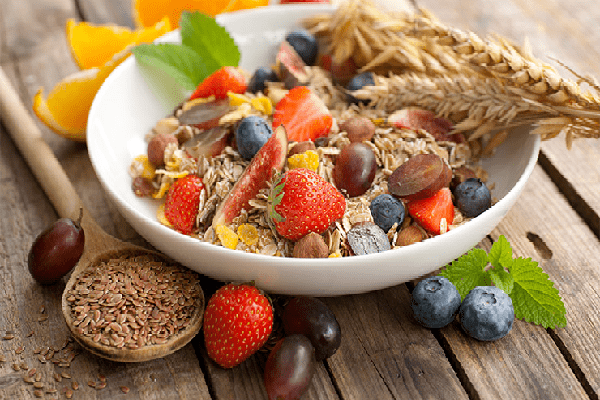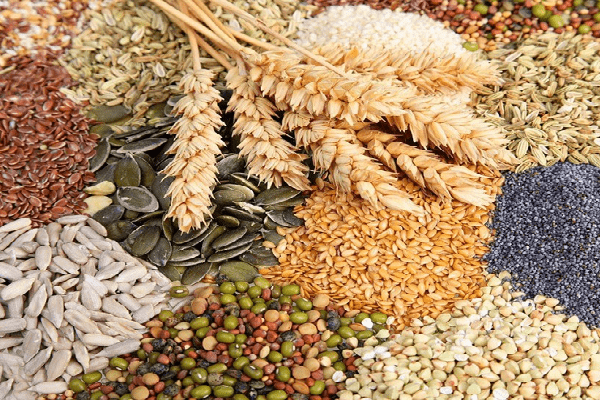Healthy food >>>> Fiber in the diet
Fiber in the diet.

Nutritional advice to enrich your diet with plant foods (fruits, vegetables, berries; roots and herbs) are not just empty words. All edible plants are a source of fiber, the merit of which in maintaining the health of the body has long been enshrined in scientific development and research. Fiber is literally the engine of progress in the digestive tract. If there is no fiber among the food components, a person begins to overcome constipation, dysbacteriosis, flatulence and intoxication.
Why is fiber good for you? By its chemical composition, fiber is polysaccharides (cellulose, hemicellulose, pectins) and organic polymers (lignin, gum). These substances provide an important structural function in plants: water retention (hygroscopicity). And it is this qualitative characteristic that is beneficial for human digestion.

Fiber is a vegetable enterosorbent: it swells and retains moisture, has excellent adsorption qualities (it is able to bind toxic waste products of microorganisms, heavy metal molecules, radioisotopes, allergens) and is excreted in an indigestible form from the body. Substances that form fiber are harmless to the human body, not absorbed (have zero calorie content) and do not injure the mucous membrane lining the walls of the gastrointestinal tract. Fiber is a component of the environment for the vital activity of beneficial intestinal microflora - an important component of human immunity.
What parts of plants contain fiber:
- Fruit pulp (pumpkin, zucchini, eggplant, tomatoes, cucumbers, peppers, physalis, pear, quince, persimmon, apples, peaches, apricots, kiwi, plums, strawberries, gooseberries, currants, cranberries, grapes, cherries, cherries).
- Stems, heads of cabbage or plant roots (cabbage, kohlrabi, Brussels sprouts, salads (cabbage and leaf), fennel (cabbage and leaf), cabbage chicory, celery (leaf and root vegetable), root vegetables (carrots, rutabagas, radishes, daikon, radish, beetroot, turnip, horseradish), purslane, asparagus, rhubarb, garlic, seaweed).
- Plant leaves (all types of cabbage and collard, Swiss chard, sorrel, parsley, dill, chervil, all types of onions, garlic, wild garlic, spinach, purslane, rhubarb, seaweed).
- Inflorescences (artichoke, cauliflower, broccoli, pineapple).
- Stroma, husks, cobs, or grains (citrus fruits, figs, strawberries, raspberries, blackberries, currants, cranberries, blueberries, corn, grains, nuts, seeds, legumes, bran, sprouted grains).
- Edible skin of fruits, berries and vegetables.
- Vegetable resins (resin of fruit trees (aka gum) of cherry, sweet cherry, apple, plum, peach, apricot, etc.).

Fiber in the diet is the main ingredient of the anti-cholesterol diet: non-nutritive; swells and fills the lumen of the digestive tract, creating the illusion of satiety; is not fermented by digestive secretions and is completely evacuated from the body.
Fiber is necessary for people with digestive problems, but coarse fiber (stems, grains) is harmful for inflammatory diseases of the gastrointestinal tract and trauma to the gastrointestinal tract (Crohn disease, colitis, peptic ulcer, enteritis).
The pharmaceutical industry, in order to popularize fiber, produces a range of nutritional supplements based on plant materials. Many of the ingredients in fiber are found in prebiotics.

Read

Read



























